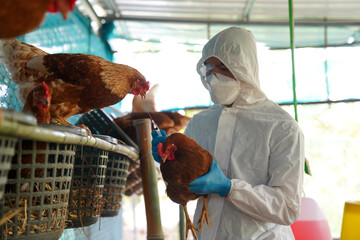Wastewater treatment plants spread antibiotic resistance

The products of wastewater treatment have been found to contain trace amounts of antibiotic resistant DNA. These products are often reintroduced to the environment and water supply, potentially resulting in the spread of antibiotic resistance. As such, researchers at the University of Southern California Viterbi School of Engineering have been studying the development of these potentially harmful and dangerous genes in wastewater treatment processes. Their findings, published in Environmental Science &Technology, indicate that even low concentrations of just a single type of antibiotic leads to resistance to multiple classes of antibiotics.
“We’re quickly getting to a scary place that’s called a “post-antibiotic world,” where we can no longer fight infections with antibiotics anymore because microbes have adapted to be resilient against those antibiotics,” said Adam Smith, assistant professor of civil and environmental engineering at USC and lead investigator of the study. “Unfortunately, engineered water treatment systems end up being sort of a hot-bed for antibiotic resistance.”
USC says that the majority of the antibiotics we consume are metabolized in our bodies. However, small amounts pass through us in our waste, which are then carried to wastewater treatment plants. At these plants, one of the common ways in which the wastewater is treated is with a membrane bioreactor, which uses both a filtration system and a biological process where microscopic bacteria consume waste products.
While consuming the organic waste, the bacteria encounters the antibiotics and expresses resistance genes that reduce effectiveness of these medicines. These resistance genes can then be passed on from parent to daughter cell and between neighbors through a process known as horizontal gene transfer.
As the bacteria eats, reproduces and grows, an excess is accumulated called biomass. A typical wastewater treatment plant produces tons of biomass every day. Once treated, it is disposed of in landfills or used as a fertilizer for agriculture and livestock feed crops.
In an even more dire scenario, small amounts of antibiotic resistant bacteria and free-floating DNA make it through the filtration membrane and come out the other side of the treatment plant in what is called the effluent, or the water stream that leaves the facility. In Los Angeles, some of this will be dumped into the L.A.River and Pacific Ocean, while the rest is recycled for irrigation, car washes, firefighting, or to replenish groundwater supplied, a common source of drinking water.
The team, also including Ali Zarei-Baygi, the study’s first-author and Ph.D. student at USC, Moustapha Harb, postdoctoral scholar at USC, Philip Wang, PhD student at USC, and Lauren Stadler, assistant professor at Rice University, believe that the amount of antibiotic resistant organisms formed in treatment plants could be reduced through alterations in the treatment processes. For example, by employing oxygen free, or anaerobic, processes rather than aerobic processes, and by using membrane filtration.
Accordingly, for their study, they used a small-scale anaerobic membrane bioreactor and compared the resulting antibiotic resistance profiles in the biomass and effluent to each other and to the varying concentrations and types of antibiotics they introduced into the system.
Read More...
Related Articles:
Drug-resistant bacteria—germs that have adapted immunities to antibiotic treatments—have found their way to the International Space Station, according to a new study.
In a move celebrated by experts and activists who continue to raise alarm about the growing threat of antimicrobial resistance—fueled in part by rampant overuse of medicines in agriculture—the European Parliament on Thursday approved new rules for antibiotic use on healthy farm animals
The FDA has announced that some flea and tick medications can cause adverse reactions in dogs and cats, issuing warnings to pet owners and vets. Meanwhile, the CDC has announced that people are getting sick from pets and the antibiotics are failing to work. Animals that received drugs in the isoxazoline class, including products sold under the names Bravecto, Nexgard, and Simparica, have experienced adverse events such as muscle tremors, ataxia and seizures, the FDA said.
When it comes to global health policy, Bill Gates has never been known for subtlety. So it's hardly surprising that his charitable foundation's latest report on the greatest challenges facing mankind might make some readers want to lock themselves in an indefinite quarantine.
Well, this is a downer: Prozac, a drug taken by millions of folks every day to help them cope with chronic depression and anxiety, has been shown to allow for antibiotic resistance in dangerous strains of bacteria, under laboratory conditions.
The FDA has issued a warning over a rare form of flesh-eating bacteria which targets the genitals, caused by several widely-used diabetes medications, reports Bloomberg's Michelle Cortez.
America is facing a health nightmare unlike anything that we have ever experienced before. According to the CDC, rates of syphilis, gonorrhea and chlamydia have all skyrocketed to the highest levels on record, and top health professionals are urging coordinated national action to battle this unprecedented crisis. Even before these latest numbers, the United States had “the highest STD rates in the industrialized world”, and it is becoming exceedingly clear that things are rapidly getting worse. So exactly what does this say about us as a society? Sexually-transmitted diseases are spreading like wildfire, and those on the front lines are not optimistic that we will be able to turn this health crisis around any time soon.
Multidrug-resistant “superbugs” that can cause dangerous infections in hospitals are becoming increasingly resistant to alcohol-based hand sanitizers and disinfectants designed to hold them at bay, scientists said.



